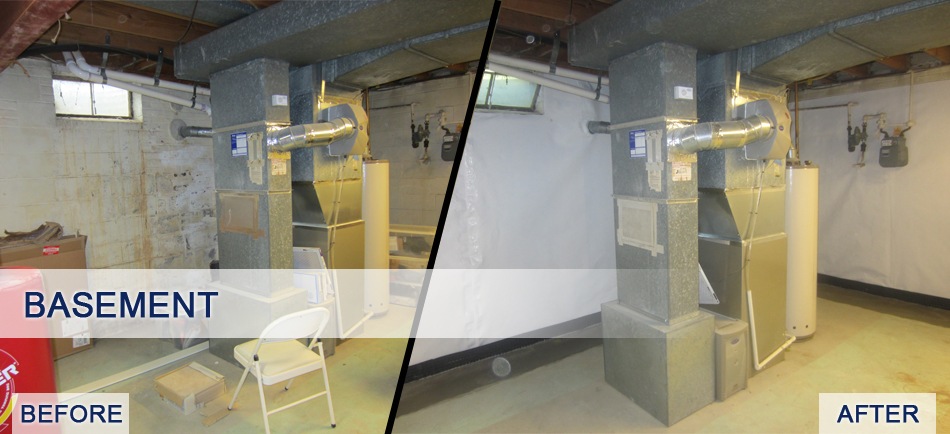- LIVE Response 8am-8pm | Saturdays 9am-5pm
- Get Financing - APPLY NOW!
- HQ: (571) 350-8292
- Maryland: (301) 841-6761
- NOrthern Virginia: (703) 721-7148
One of the essential things you can do to safeguard the value of your house (and the conditions inside that affect your family’s health!) is to get water out of your basement and resolve the underlying problem or problems that are causing it to get inside.
A damp basement not only feels and smells bad, but it also puts your home’s value in jeopardy. Basement dampness, if left untreated, may harm flooring and walls, foster mold, and even damage the roof!
Clearing clogged gutters, or having some correctly installed, always works to move water away from the foundation and may aid in the treatment of certain damp basements. You’ll need to take more serious action if the problem is caused by other reasons, such as water rushing toward your property on the surface, seeping in from below, or backing up through municipal storm drains, for instance. Incorrectly installed systems can make a downspout causing water in basement walls possible!
Here are some methods for preventing water from entering your basement:
1. Add a Basic Gutter with Planned Extensions
Use plastic or metal gutter extensions to move water further out if your downspouts are dumping water fewer than 5 feet from your house.
Extensions that are not appealing might best suit you for long-term solutions, particularly if you’re prone to stumbling over them or driving your lawnmower over them. Another option, an undetectable, permanent underground drain pipe, is capable of delivering large quantities of gutter run off far away from your property.
2. Restore the Crown Management
Surface water isn’t draining away from the home properly if water is still seeping into your basement or crawl space from high foundation walls. Even if the obvious holes have been fixed, there could still continue to be a problem. Your home should be built on the soil crown for the first 10 feet with a slope of at least 6 inches in all directions.
3. Repair the footing drains
Hydrostatic pressure pulls water up from the earth, causing water to seep into the basement at the lower portion of the walls. Another place it accumulates is at the seams where the walls meet the floor.
First, check for whether or not you have footing drains. These are subterranean pipes that take water away from the foundation and were installed when the home was built. Any issues can be repaired to help manage the conditions of the dampness in your house from this possible source of moisture.
4. Pump the Water
You’ll have to channel subsurface water from the inside if you can’t keep it out. A channel drain pipe empties into a collection tank at the lowest point in the basement, where it is pumped out by a sump pump.
5. Waterproof the Upper Part of the Walls
Installing an internal drainage system removes the water but will not make the walls watertight. You’ll need an exterior system for that, which includes a French drain to relieve hydrostatic pressure and an exterior waterproofing installation to safeguard the foundation.
This major task necessitates excavation around the house, however, it could serve as the best option if you have a foundation with several gaps. It also keeps filth and water out of the completed basement, which may be the best option if you don’t want to rip it up. With the help of a downspout installation system, it is possible to manage moisture intrusion.
The aforesaid strategies can prevent downspout issues easily. With the help of a professional approach, your downspouts can be made to function properly if they have become damaged. Give our team of experts at Basement Masters Waterproofing a call at (571) 371-0960 or visit our website for more information.

Take A Look For Yourself!
Visit our Before and After gallery for shots of completed projects.We are glad to help increase the quality of life in your home!